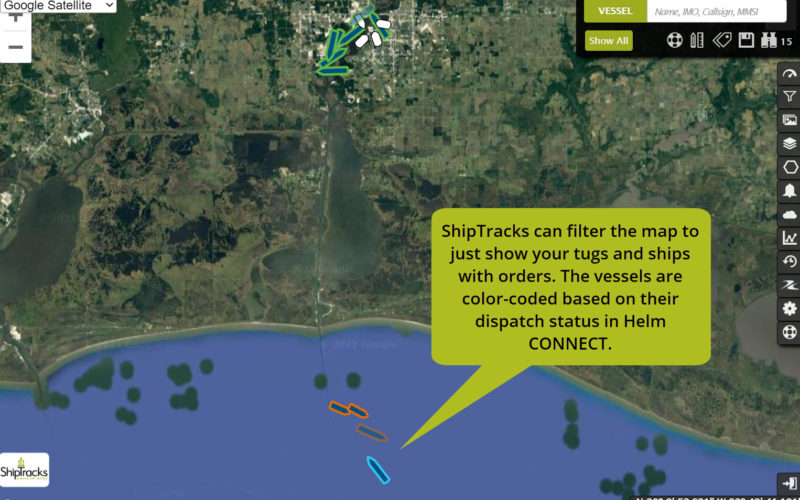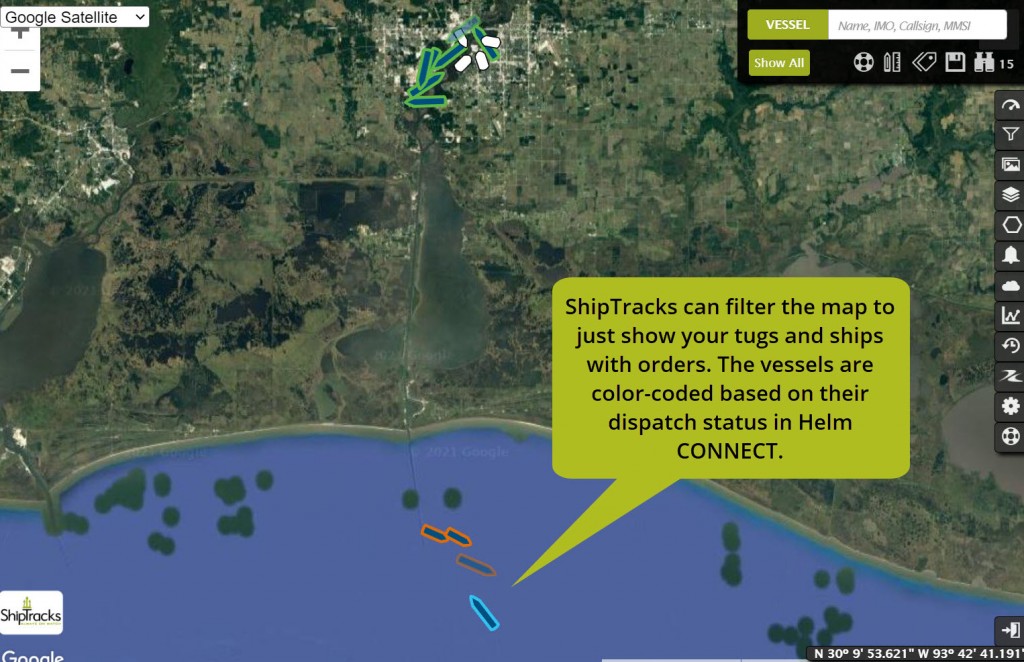(VICTORIA, British Columbia) — Marine operations software developer Helm Operations and AIS services provider ShipTracks have launched a new set of integrated features for harbor docking companies designed to ensure that companies “never miss another job” in their ports.
The new integration links Helm CONNECT Jobs, the most widely used dispatch software in the harbor docking market, and ShipTracks’ AIS technology to streamline and automate the creation of towage orders directly from the AIS system. The result is greater operational awareness, reduced workloads for dispatchers, and increased revenue as operators identify and capture jobs that were previously lost to their competitors.
Modern harbor docking operations use a variety of tools to monitor their ports and ensure operational efficiency, including AIS systems to track vessel speed and movements, and tug dispatching and invoicing systems like Helm CONNECT Jobs to schedule and manage towage. Up until now, these systems have operated largely in isolation, but by integrating the systems, dispatchers can now not only receive automated notifications of vessels entering port, but also see immediately if their company has a contract with the vessel, if the towage work has been scheduled, and even automatically import the vessel and related jobs into the dispatch schedule – all from the AIS screen.
“When we traditionally look at AIS, what we’ve focused on is situational awareness,” said Charles Riley, CEO of ShipTracks. “But with this integration with Helm CONNECT we can now offer customers true ‘revenue awareness’ and help them not only plan for safe operations, but also track and automate every potential job and source of revenue in the port to help them maximize returns and market share.
“By notifying companies when a vessel enters their region, displaying who the job belongs to and what its status is, then letting them enter orders directly into Helm CONNECT from the ShipTracks screen, we can make it so they never miss a job again.”
Beyond just identifying new and potential revenue, the integration also provides operators with new tools to increase efficiency and reduce costs. “On the commercial side, many companies still have staff who watch AIS screens throughout the day to identify when new ships are arriving in port. With this integration we can automate that,” said Paul Cyr, senior account and integration manager at Helm Operations and a 20-year veteran of the industry.
“On the dispatch side as well, we can automatically populate jobs for inbound vessels for review and approval by the dispatcher, reducing human error and saving hours of manual data entry. Even better, we can improve the dispatcher’s cost awareness by letting them know if tugs are moving without assigned work or if vessels are going too fast while mobilizing. This really makes it possible for dispatchers to reduce operational costs in port,” said Cyr.
The results are dramatically increased efficiencies and, although the integration is new to market, operators are already pleased with the results. John Buchanan, president of Harbor Docking and Towing, was an early user of the system. “This integration has allowed us to automate our processes and improve data quality,” Buchanan said.
“With ShipTracks, our dispatchers can create an order just by grabbing the vessel and dragging it to the order slot, pre-populating the form with vessel data provided by ShipTracks. What used to take them five or 10 minutes now only takes them 30 seconds and we know the information they’re using is accurate. With margins getting narrower in the tug industry there is less room for error, so I would absolutely recommend this integration; you will realize efficiencies in your operations with it.”


